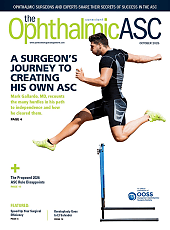A large observational study using US Medicare data expands on prior evidence regarding the association between the use of glucagon-like peptide-1 receptor agonists (GLP-1 RAs) and an increased risk of developing nonarteritic anterior ischemic optic neuropathy (NAION) in older patients with type 2 diabetes.
The retrospective cohort study, which was recently published as a research letter in JAMA Ophthalmology, included nearly 4 million Medicare enrollees who were aged 65 years or older and who were prescribed any antidiabetic medication between 2007 and 2021. Among them, 579,589 patients (15.1%) had been prescribed a GLP-1 RA:
-
Dulaglutide: 6.6%
-
Semaglutide: 4.9%
-
Liraglutide: 4.2%
-
Exenatide: 2.1%
To control for disease severity, patients using only metformin or insulin were excluded from the primary reference group. The median follow-up was 3.7 years. During this period, 7,660 patients (0.2%) developed NAION.
Compared with patients using other second-line antidiabetic drugs, GLP-1 RA use was associated with a 15% increased risk of NAION. In a sensitivity analysis that compared GLP-1 RAs to all other antidiabetic medications, the risk increase rose to 23%. Semaglutide showed the highest associated risk (hazard ratio [HR] = 1.39), though liraglutide was also associated with increased risk (HR = 1.25). Dulaglutide and exenatide were not significantly associated with NAION (HR = 0.96 and 1.16, respectively).
Other variables that were associated with elevated NAION risk included:
-
Male sex (vs female: HR = 1.00 vs 0.67)
-
White race (reference group; Asian, Hispanic, and Black patients had lower risks)
-
Medicaid eligibility (HR = 1.18)
-
Rural residence (HR = 1.08)
-
Diabetic retinopathy (HR = 1.66)
-
Obstructive sleep apnea (HR = 1.08)
-
Chronic kidney disease (HR = 1.12)
-
Amiodarone use (HR = 1.77)
-
Current insulin use (HR = 1.43)
The median time from GLP-1 RA initiation to NAION diagnosis was 3.3 years.
The authors noted limitations including reliance on ICD codes to identify NAION, lack of data on diabetes duration prior to Medicare enrollment, and a restricted age range that may limit generalizability.
The authors concluded that their findings align with previous large studies. “The risk of NAION warrants further research given the increasing use of GLP-1 RAs and the seriousness of NAION,” they wrote.








